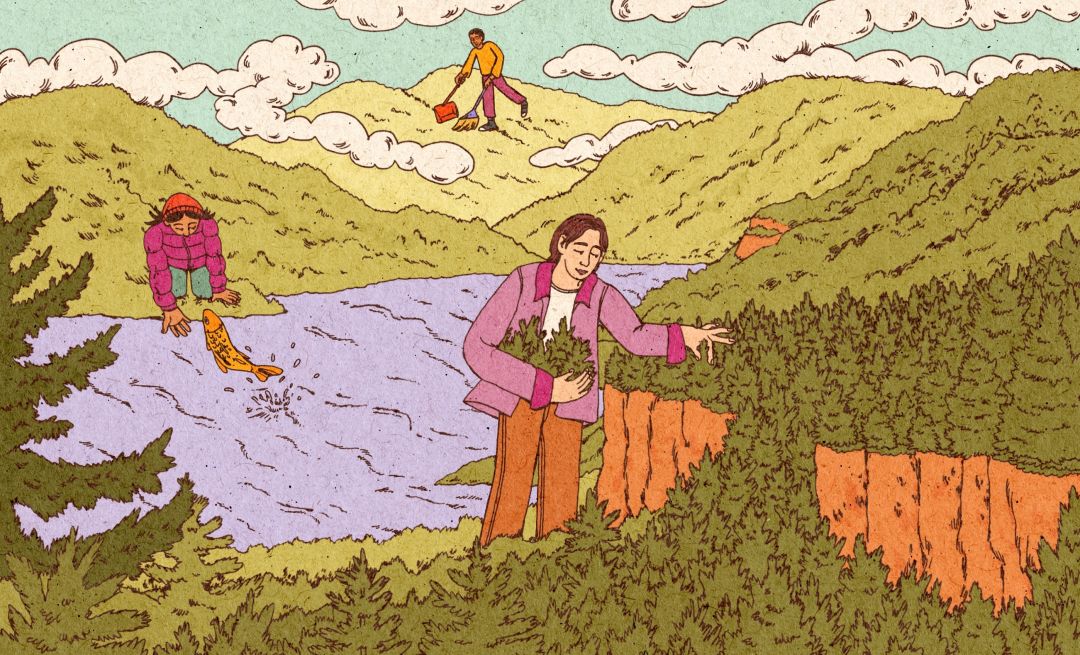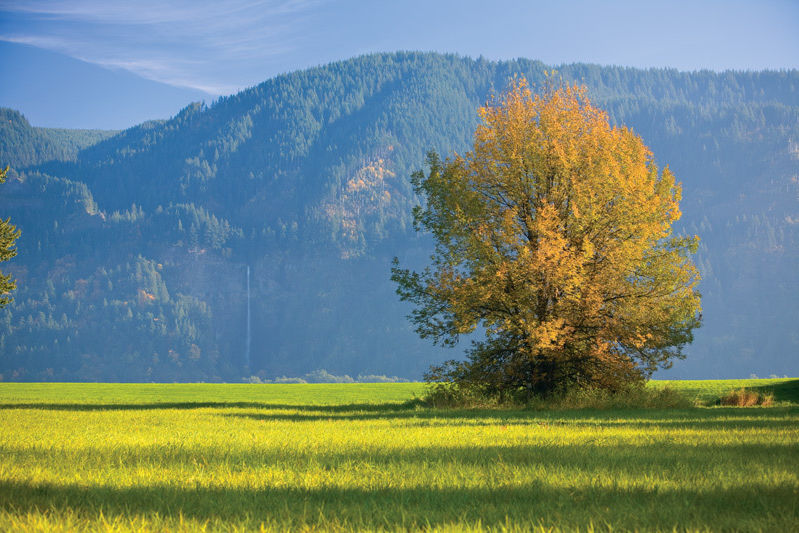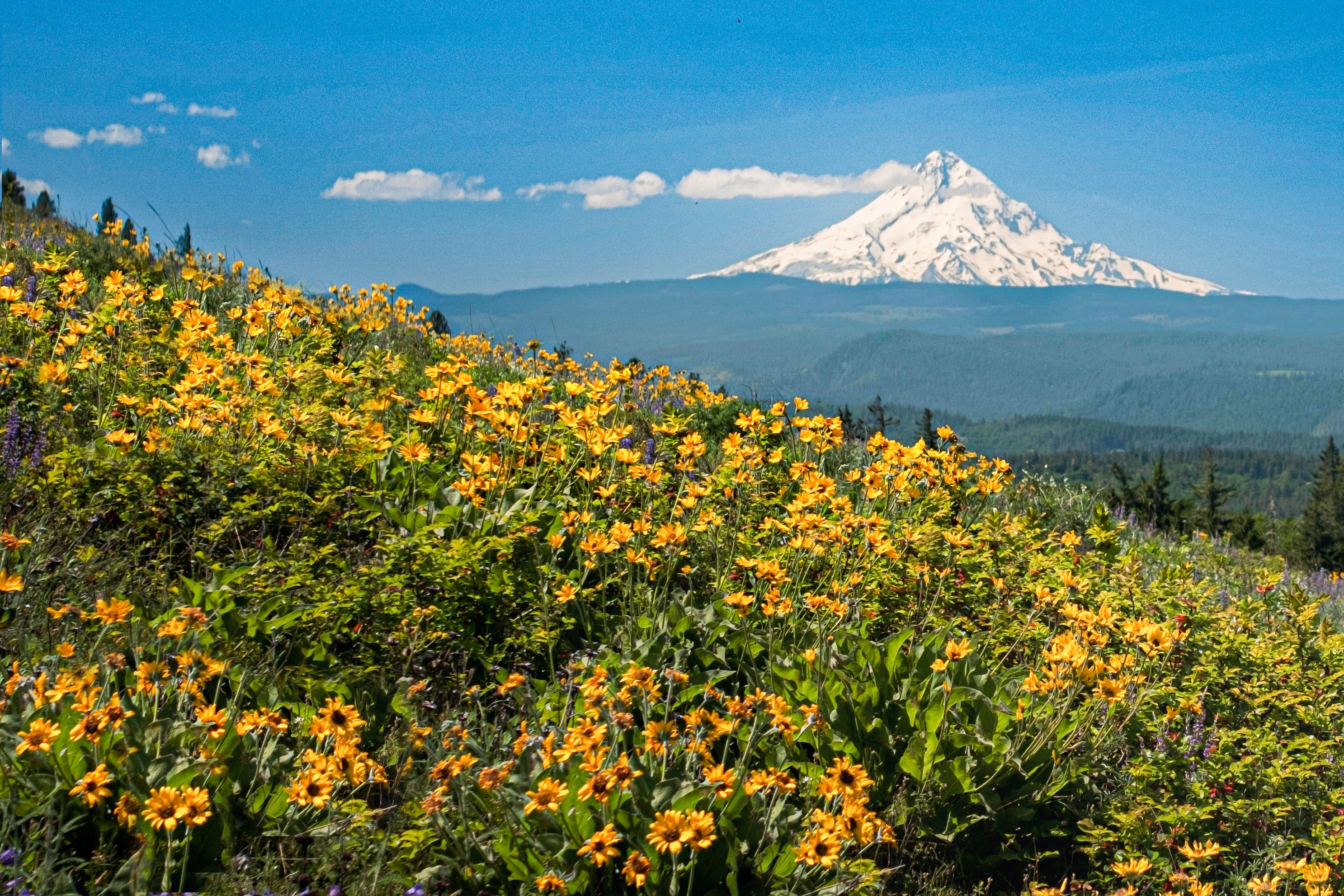Friends of the Columbia Gorge Helps Protect a National Treasure

Image: Kaitlin Brito
As Kevin Gorman, executive director of Friends of the Columbia Gorge, puts it, there’s “nothing starker” than the swift transition from outlet malls to open lands as you cross the Sandy River from Troutdale. That’s where the Columbia River Gorge National Scenic Area begins on the Oregon side—then it’s all lush temperate rain forests, grasslands, waterfalls, and spring wildflowers for 85 miles.
The Gorge is treasured for its views and waterfalls, extraordinary biodiversity, and miles of hiking trails. But it might have looked very different today if not for the passage of the Columbia River Gorge National Scenic Area Act, which protects about 293,000 acres of land in Oregon and Washington. It was signed into law in 1986, after years of campaigning by Friends of the Columbia Gorge and community allies.
Since then, the Oregon-based nonprofit has continued to work to protect the area from the encroachment of Portland and Vancouver’s suburban sprawl, as well as mining, commercial, and industrial activities. Among other efforts, it’s also helped support a wildlife habitat restoration project at the Steigerwald Lake National Wildlife Refuge in Washington and connected with thousands of students and volunteers through stewardship and youth education programs. One of those is the “Great Gorge Wahoo!”—a regular field trip for seventh and eighth graders at Portland’s St. Andrew Nativity School, a tuition-free school serving students from low-income backgrounds. The event introduces them to different sections of the Gorge in the spring and fall.
“Some of them have never been that far east,” says Catherine Hopkins, a science teacher at St. Andrew who was first introduced to the program in 2021. “It’s a really cool opportunity for them to be out in nature and see something right in our backyard.”
The Wahoo is just one of many outreach efforts to bring people to the Gorge, in service of the organization’s overarching goal: to be a citizen watchdog, Gorman says. The organization reviews and comments on every land use application in the National Scenic Area and, in rare circumstances, will file lawsuits.
In September 2022, an Oregon agency terminated a proposal for a gas-fired power plant near the Columbia River. Gorman calls the plant a vestige of an effort “to really make the Gorge a fossil fuel highway,” and says the agency decision was a victory years in the making, “because of a lot of hard work from individuals, [environmental] groups, and tribes.”
The nonprofit also permanently protects more than 1,600 acres through its land trust, which was created in 2005, including a rehabilitation site for western pond turtles and two public preserves: Mosier Plateau and Lyle Cherry Orchard.
For Gorman, the multifaceted approach is key to preserving an astonishingly complex landscape. “There are different species that are threatened in different areas, and then you have bigger issues around the region as they relate to the climate,” Gorman says. “It all impacts the Gorge. So, it really is sort of this pinch point. It makes the work very dynamic.”













